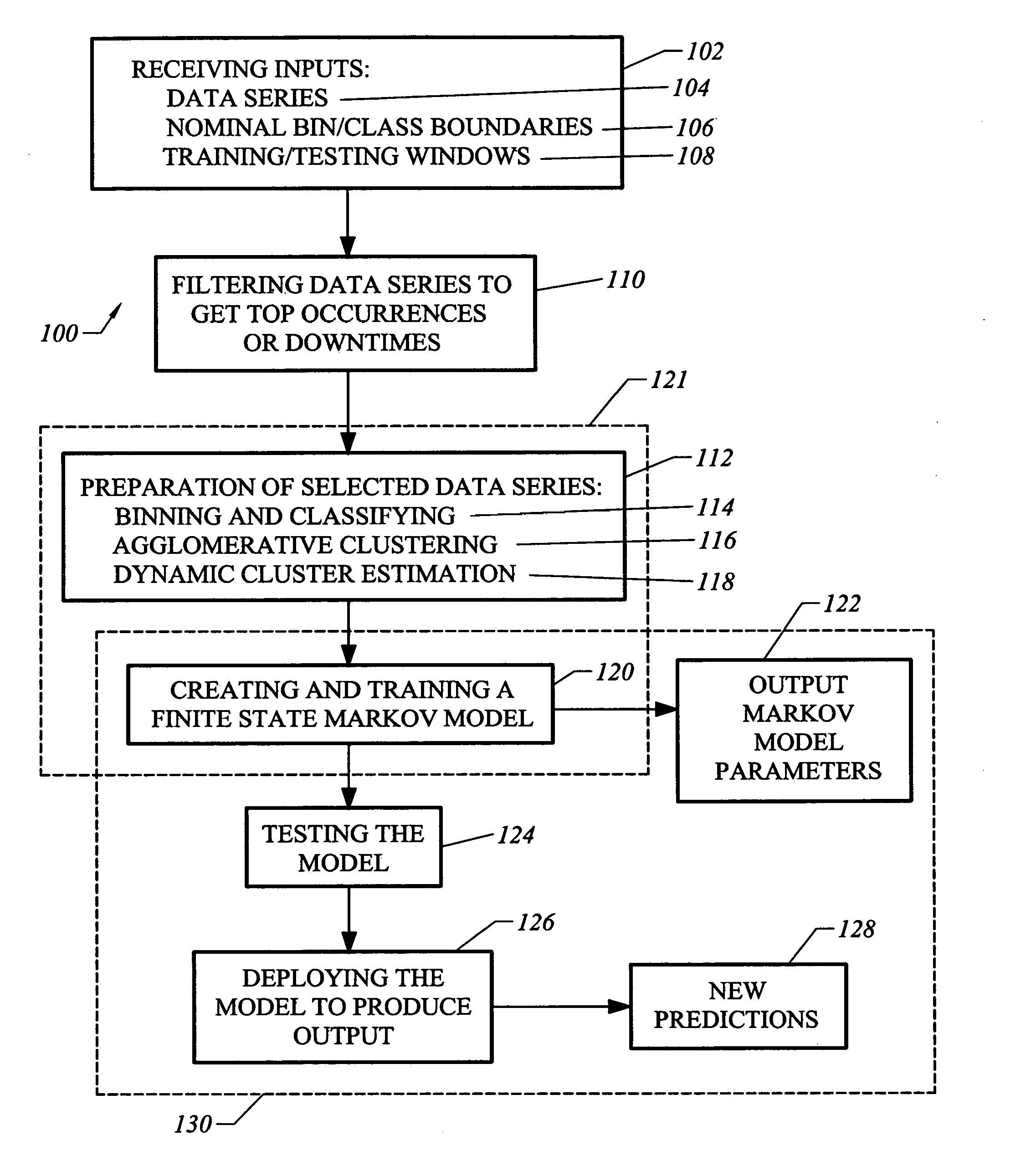System and method for signal prediction
a signal prediction and signal technology, applied in the field of time-stamp data analysis, can solve the problems of large plant maintenance staff per shift, high cost, and high cost of maintenance services
- Summary
- Abstract
- Description
- Claims
- Application Information
AI Technical Summary
Problems solved by technology
Method used
Image
Examples
Embodiment Construction
[0020] Disclosed herein are a method and a system for predicting the trend of series of temporal events utilizing a finite state Markov model. A fully connected first order finite state Markov model is trained for an event series using discrete real time-series data. In general the model can be order Nth, where N can be determined by a cost function that uses as inputs, for example, the aggregated computational cost of higher order models and the improved accuracy of the model when a higher order is used. Assuming the trend of an event within a short time window can be modeled with some degree of approximation as a first order finite state Markov process, the model learns the overall trend of events in terms of probabilities from the past data. It is then tested by predicting the trend of occurrences, Mean Times to Repair (MTTRs) or downtimes of event codes for a chosen starting day and time period. A feature of the method is that an architecture for the Markov model is developed fr...
PUM
 Login to View More
Login to View More Abstract
Description
Claims
Application Information
 Login to View More
Login to View More - R&D
- Intellectual Property
- Life Sciences
- Materials
- Tech Scout
- Unparalleled Data Quality
- Higher Quality Content
- 60% Fewer Hallucinations
Browse by: Latest US Patents, China's latest patents, Technical Efficacy Thesaurus, Application Domain, Technology Topic, Popular Technical Reports.
© 2025 PatSnap. All rights reserved.Legal|Privacy policy|Modern Slavery Act Transparency Statement|Sitemap|About US| Contact US: help@patsnap.com



